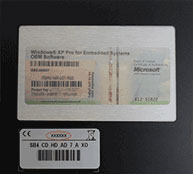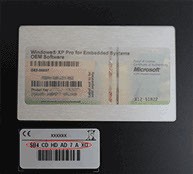As touchscreen technology continues to dominate the consumer sector, the industrial industry is finding ways to position this disruptive physical technology into their everyday workflows. Since industrial brands often operate in complex, rough, and harsher-than-normal working environments, they can’t always utilize technology that’s available to consumers.
When it comes to physical hardware like touchscreens, industrial businesses need equipment that’s resistant to extreme conditions, unique workflows, and moisture — while still being useful enough to utilize under continuous operations.
The industrial world may be subjected to extreme temperatures, wet surfaces, and unique chemicals. For example, the industrial manufacturers in the fast moving consumer goods (FMCG) industry often operate under conditions with heavy moisture, while manufacturers of petrochemicals often operate in environments dense in wet chemicals.
To be useful and operational, touchscreen technology must be capable of withstanding these elements while simultaneously being operationally efficient enough to support multiple touchpoints and demanding workflows.

Why Projected Capacitive Touchscreen Technology
To withstand these elements and conditions, many industrial companies choose to utilize projective capacitive touchscreens coupled with hardy protective casings.
Projective capacitive touchscreen technology(or PCT) reads touch signals by measuring the capacitance of electrodes. So, when a finger, stylus, or conductive material gets near an electrode on the screen, it alters the electromagnetic field — which is then used to plot X and Y coordinances. This means that PCAP monitors work via nearby contact instead of direct surface contact, which means that you can use the touchscreen with gloves or bare hands. There are many benefits of using projective capacitive touchscreens (PCAP), especially in an industrial setting.
These benefits include:
- PCT is multi-touch capable, meaning that multiple workers can utilize the equipment simultaneously.
- PCAP touchscreens can operate in harsh environments if ruggedized.
- PCAP touchscreens are water-resistant and chemical-resistant if properly ruggedized.
- Workers can operate PCAP touchscreens with protective wear (i.e. gloves) on.
- PCAP touchscreens don’t have touchscreen “drift” which can alter selections.
- PCAP touchscreens are heavily resistant to wear-and-tear (e.g., abrasions, scratches, etc.) if ruggedized.
- PCAP touchscreen monitors are often built to handle extreme environments.
6 Questions To Ask Before Purchasing
Before you choose to purchase a PCAP touchscreen, there are a few questions that you should ask. Each producer of PCAP-enabled monitors or equipment will provide a different solution, so it’s critical that you understand their product before investing in their technology.
1) Is the Projective Capacitive Touchscreen Monitor Ruggedized?
Depending upon your industry, you will probably need the monitor that you’re utilizing to be ruggedized. This can mean different things to different manufacturers. For example, all of our PCAP monitors have industrial-grade components that resist the wear-and-tear of traditional and complex industrial settings. Rugged monitors will help ensure that situations arising from the conditions of the workplace don’t destroy or damage your monitor.
2) What Can You Use to Clean Your Monitor?
Cleaning your industrial equipment (including touchscreens) often involves streamlined processes like pressurized water. Since cleaning industrial areas of food products, chemicals, or any other form of waste often requires you to use H20, you need to ensure that the PCAP monitor that you choose is water-resistant. All of our haveHigh IP and NEMA sealing as well asstainless steel construction — allowing you to wash them with regular pressure washers.
Make sure that you take cleaning processes into consideration when choosing your monitor.
3) Can the PCAP Monitor Withstand Multiple Operations
While most industrial brands have hyper-personalized workflows that they use to streamline efficiencies, these often rely on workers being able to multitask and operate equipment simultaneously. Ensure that you choose a PCAP screen that supports multi-touch and has is glove and hand sensitive. This is especially important for industries where gloves are utilized for employee safety.
While most PCAP monitors offer this, some companies cover their screens with additional equipment to ruggedize them that renders some of the benefits of PCAP useless.
4) How Will You Handle Wear-and-Tear?
Optimally, most industrial businesses should invest in an onsite warranty that allows them to access critical support when they need it most. However, beyond this support, you need to take your regular operations into account. For example, if you need a monitor to support computer operations that require heavy typing, you may want to invest in additional equipment such as a rugged keyboard.
You also need to ensure that ideal temperatures are met as indicated on the monitor manufacturers website or booklet. It’s also a good idea to place PCAP screens in areas that have minimal dust and debris traffic. This can help your monitor last longer and perform regularly.
5) What Are You Using the PCAP Monitor For?
Since PCAP monitors can be used across industry channels, it’s vital that you ask yourself how you will be using the equipment. Some industrial manufacturers position PCAP monitors to enable automation and workflows improvements. Others use them to handle sensitive equipment. The way that you use your monitor will impact your needs and purchase decision.
If you’re using your monitor for regular automation, it’s a good idea to purchase a PCAP monitor with built-in Watchdog functions to prevent malfunctions from impacting your entire automation pipeline. If you’re using your monitor to enable sensitive operations, ensure that it fits your specific needs.
6) What’s Your Cost Range?
Investing in industrial equipment can be costly. You need to be aware of your available budget and your needs. If you try to buy extremely cheap products, you may end up spending more down-the-road by way of repairs and replacements. If you choose a product that’s outside of your budget, it could impact your ROI. Try to find equipment that fits both your needs and costs.
Finding the Right PCAP Monitor For You
At CKS, we develop critical industrial equipment that can enable your workers, improve operations, and streamline your everyday workflows. From PCAP monitors to industrial workstations and rugged keyboards, we create products that are built to last in industrial environments.
Our fully customizable PCAP monitors are water-resistant, multi-touch capable, finger and glove sensitive, ruggedized, and sun-resistant. From critical automation capabilities to multi-operations, we provide the right industrial products for your unique environments. Contact usto learn more about our PCAP monitors.


